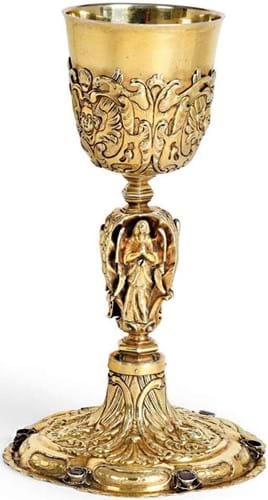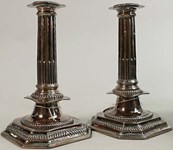Taking turns, the first drinker blows into the pipe, sending the sails of the windmill in motion. The aim is to empty the cup before they stop moving.
The drinker then spins the hand of the clock and where it lands indicates the next victim.
The majority of windmill cups encountered today are revivalist pieces and it was assumed that the 9in (22cm) example offered by Toovey’s (24.5% buyer’s premium) in West Sussex on November 3 dated from the late 19th century.
However, closer inspection suggested it might be of the period c.1640, its maker’s mark now rubbed but possibly that of specialist maker Johan Hermensz Gramey (Nijmegen).
Estimated at £150-250, it instead made £10,000 – a decent price even for a 17th century survivor.
Continental visitor
Another rare 17th century continental European visitor to these shores was spotted at Tennants (20% buyer’s premium) in Leyburn on November 13: a silver gilt chalice with an inscription dated 1652.
Standing 10½in (27cm) high, it comprised cast decoration of angels within niches to the stem and chased putto masks with auricular ornament to the bowl and base. The base, once set with faceted garnets (two now lacking and another cracked) was punched to the rim with an inscription in Polish translates as Jadwiga Zakrzewska gave this chalice to the Brothers of the Rosary in 1652.
More recently it had been used for communion at St Anne’s Orthodox Monastery in York, based in a small terraced house near the Minster. The marks (one a gothic letter T, the other indistinct) were assumed to be Polish, although the form is one also found in other parts of Catholic Europe.
Estimated at £2000-3000, it sold at £6500.
















